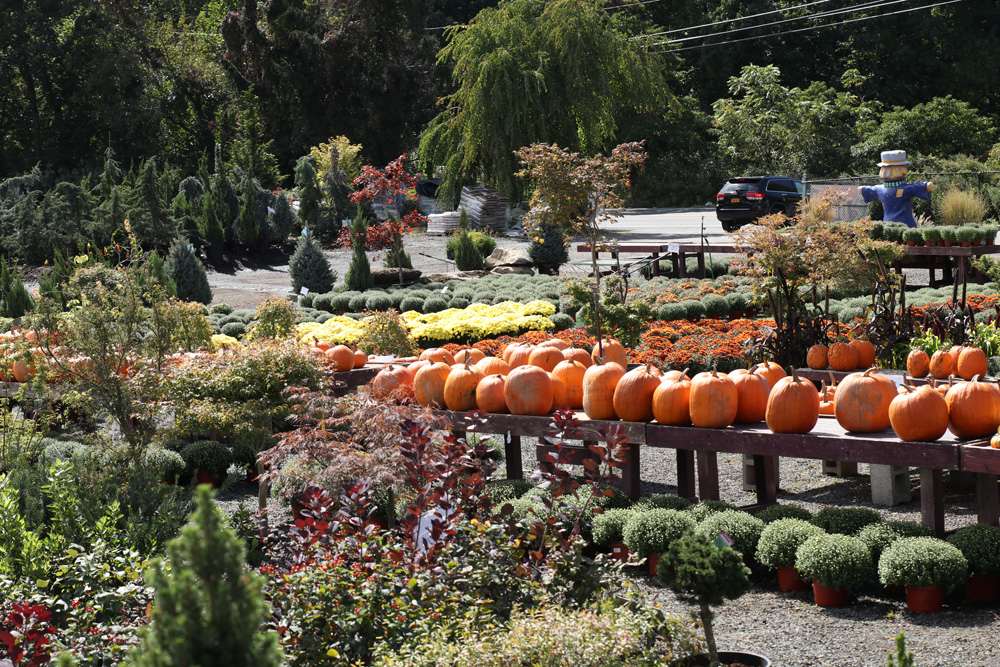
(Pomona, New York) September 20, 2022 — Many people believe spring is the best time to plant, but adding perennials, wildflowers and shrubs to the garden in the fall gives plants a head start for their first season. Fall planting is a great investment in your home’s landscape!
In addition to perennials, wildflowers, and shrubs, vegetables and herbs grow well in fall, too, especially greens and root vegetables. When you plant in the fall, you take advantage of milder weather. More rain and moderate temperatures equal less watering (potentially a big cost savings) and there will be less stress on new plants, allowing the root systems to establish themselves in a comfortable environment before the winter.
Planting in the fall also provides support for pollinators like birds, bees, butterflies and beneficial insects because those fall plantings will bloom earlier next spring.
The time of year is one aspect of a successful garden and landscape, but how you plant and care for the new trees and shrubbery is another.
Here are a few guidelines on getting the job done right:
- Research the plant’s full-grown size so when you plant, you are allowing enough space giving them plenty of room to grow.
- Loosen the root ball in potted plants and remove twine and burlap from trees but do not remove the strings and burlap.
- Place the plant in the hole gently. Cut the strings and fold back the burlap.
- Dig a hole that’s twice as wide as the root ball and several inches deeper. Leaving enough room to place your backfill mixture several inches deep below the ball.
- Carefully place the tree or shrub in the hole. Set the plant so that the root ball is slightly higher than the surrounding soil. Handle the plant by the root ball, not by the trunk. This will avoid damaging or even killing the plant.
- Backfill the hole with your soil mixture firming the soil as you go. Fertilizers and soil amendments added to the soil will improve plant growth. They can be organic, such as bone meal, or inorganic, such as 10-10-10 fertilizer. Soil amendments are anything mixed into the topsoil to promote healthy plant growth; they may change the pH of soil or supply nutrients. Fertilizers are primarily valued for their ability to supply nutrients. One sub-set of soil amendments, soil conditioners, like composted horse manure, improve soil structure by binding soil particles, increasing pore space and enhancing air exchange, water movement, and root growth.
- Soak the root ball and surrounding soil to eliminate any air pockets as soon as it is in the ground, followed by another thorough soaking every few days as necessary. In the fall you should be able to discontinue this watering within 10 days. NOTE: Over watering is the single biggest cause of plant failure.
- Be sure to mulch with shredded bark, compost or grass clippings after planting to suppress weed growth, retain moisture and to protect and insulate the roots during the cold winter months.
- Feed new plants according to their specific needs.
Come spring, you will be rewarded with new growth and blossoms on your well-established plantings that you can enjoy for years to come.
